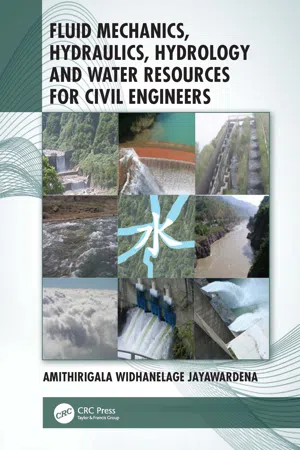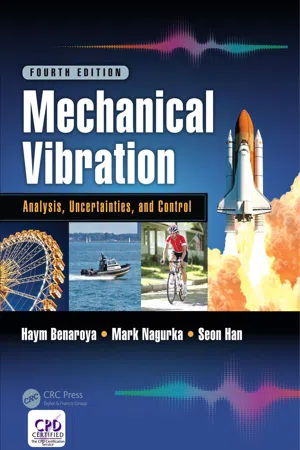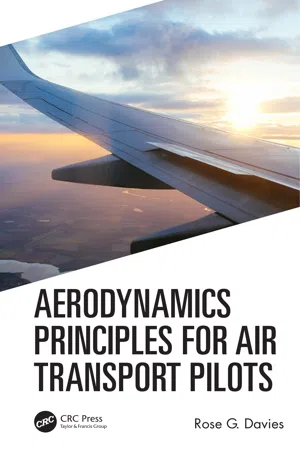Technology & Engineering
Strouhal Number
The Strouhal number is a dimensionless quantity used in fluid dynamics to describe the relationship between the frequency of oscillation of an object in a fluid and the speed of the fluid. It is commonly used to predict the occurrence of vortex shedding and is important in the study of aerodynamics and hydrodynamics.
Written by Perlego with AI-assistance
Related key terms
Related key terms
1 of 4
Related key terms
1 of 3
4 Key excerpts on "Strouhal Number"
- Amithirigala Widhanelage Jayawardena(Author)
- 2021(Publication Date)
- CRC Press(Publisher)
The Strouhal Number (St) in dimensional analysis, which describes oscillating flow mechanisms is named after him. It is an integral part of the fundamentals of fluid mechanics. Edgar Buckingham (1867–1940): Buckingham, an American physicist, is known for his contributions to dimensional analysis and in particular the Buckingham’s π theorem. L. K. Sherman (1869–1954): Sherman is known for introducing the concept of Unit Hydrograph in 1932 which has become the backbone of hydrology. Moritz Weber (1871–1951): The Weber number which is the ratio of the inertial force to the surface tension force which indicates whether the kinetic or the surface tension energy is dominant is named after Weber. Robert Elmer Horton (1875–1945): Horton, an American civil engineer and soil scientist, is known for introducing the infiltration equation widely known as the ‘Horton equation’ for infiltration. Ludwig Prandtl (1875–1953): Prandtl, a German engineer and aerodynamicist, pointed out that fluid flows with small viscosity, such as water flows and airflows, can be divided into a thin viscous layer (or boundary layer) near solid surfaces and interfaces, patched onto a nearly inviscid outer layer, where the Euler and Bernoulli equations apply. He obtained a solution to Navier Stokes equation for boundary layer flow- eBook - ePub
Mechanical Vibration
Analysis, Uncertainties, and Control, Fourth Edition
- Haym Benaroya, Mark Nagurka, Seon Han(Authors)
- 2017(Publication Date)
- CRC Press(Publisher)
The dimensionless Strouhal Number is defined as St = fD / V, where D is the cylinder diameter, V is the flow velocity, and f is the frequency of shedding. Of the undetermined parameters, α, γ, and b, only two must be chosen to provide the best fit to experimental data. This follows from the fact that α and γ are related to each other by the expression C Lo = (4 α /3 γ) 1/2, where C Lo is the amplitude of the fluctuation of c L for a fixed cylinder. The second term on the left-hand side of Equation 11.70 provides the growth of the lift coefficient c L, and the third term on the left-hand side prevents its unlimited growth. These terms are important to the success of the model because the large amplitude oscillations characteristic of vortex induced vibration are accompanied by a significant (yet finite) increase in the lift coefficient. With the appropriate choice of parameters, the Hartlen and Currie model qualitatively captures many of the features seen in experimental results. For example, a large cylinder oscillation amplitude resonance region occurs when the vortex shedding frequency is near the natural frequency of the cylinder. The frequency of oscillation in this region is nearly constant at a value close to the cylinder natural frequency. 11.6.1 Unforced van der Pol Equation The unforced van der Pol equation is given by (11.71) x ¨ - α (1 - x 2) x ˙ + x = 0, α > 0. If α is small, then the ɛ notation can be used and the van der Pol equation becomes (11.72) x ¨ + x = ε (1 - x 2) x. Expanding x to order ɛ 2, x = x 0 + ε x 1 + ε 2 x 2, the. term (1 - x 2) x ˙ becomes (1 - x 2) x ˙ ≃ [ 1 - (x 0 + ε x 1 + ε 2 x 2) 2 ] (x ˙ 0 + ε x ˙ 1 + ε 2 x ˙ 2) ≃ (1 - x 0 2) x ˙ + ε [ - 2 x 0 x 1 x ˙ 0 + (1 - x 0 2)[--=. PLGO-SEPARATOR=--]x ˙ 1 ] + ε 2 [ - x 1 2 x ˙ 0 - 2 x 0 x 2 x ˙ 0 - 2 x 0 x 1 x ˙ 1 + (1 - x 0 2) x ˙ 2 ]. Inserting this result into Equation 11.72, and equating terms of the same order in), gives the following sequence of - eBook - ePub
Engineering for Sustainable Development and Living
Preserving a Future for the Next Generation to Cherish
- Jacqueline A. Stagner, David S-K. Ting(Authors)
- 2021(Publication Date)
- BrownWalker Press(Publisher)
H ≅ 1.4 for turbulent BL and H = 2.59 for laminar BL (Schlichting and Gersten 2017) N = Sampling number R e d = Reynolds number based on the diameter of the cylinder R ex = Reynolds number based on the distance from the leading edge St = Strouhal Number Tu = Turbulence intensity in streamwise direction Tw = Turbulence intensity in cross-stream direction Ū = Time averaged velocity in streamwise direction U i = Instantaneous velocity in streamwise direction U∞ = Free stream velocity u = Instantaneous fluctuating velocity in streamwise direction u rms = Root-mean-square of the fluctuating velocity in streamwise direction W ¯ = Time averaged velocity in cross-stream direction W i = Instantaneous velocity in cross-stream direction w = Instantaneous fluctuating velocity in cross-stream. direction w rms = Root-mean-square of the fluctuating velocity in cross-stream direction X = Streamwise direction X l = Distance of cylinder from the leading edge of plate x = Downstream distance from the leading edge of plate Y = Widthwise direction Z = Vertical direction z = Azimuthal distance from the plate surface ε = Turbulent energy dissipation rate η = Kolmogorov length scale ν = Kinematic viscosity 1. Introduction To maintain the fast growth of modern economy, energy demand is rising rapidly (International Energy Agency, 2019), inevitably resulting in a significant increase in energy related emission. The increasing emission and its environmental hazards are of great concern. Therefore, much effort has been invested in improving the efficiency of engineering systems, to reduce the resources usage and alleviate the adverse impact on the environment. Among others, passively enhancing heat transfer rate via the cylinders/ribs is a straightforward and effective approach without any external power input and complicated structure. It is attractive and thus has been widely developed in many engineering systems, such as heat exchangers, and solar air heater. Xiao, et al - eBook - ePub
- Rose G Davies(Author)
- 2020(Publication Date)
- CRC Press(Publisher)
l will be the diameter of a pipe if the fluid flows through a pipe, or a length of a plate, if it flows over a plate.The Reynolds number can be recognized as a ratio of inertia force of the fluid to the friction force due to the viscosity of the fluid. The Reynolds number can be used to describe the characteristics of the fluid flow. In aerodynamics and fluid dynamics, the Reynolds number is one of the most important “dimensionless numbers”, and it determines the regimes of fluid flow.Regimes of Viscous Flow
Particles of a viscous fluid travel in a flow stream, and their flow pattern can change from orderly to disorderly with the change of flow speed or flow path. Figure 3.6 (a) shows a fluid flow in a pipe: there is a layered flow, and it is getting rippled, and then the layer is broken into small rotating pieces, when the speed of the flow is increased. Figure 3.6 (b) shows the viscous flow around a rod with clear layers when the speed of the flow is low, and with a disordered pattern when the speed of the flow is high. Figure 3.7 shows the change of a flow over flat plate. At the leading edge of the plate, the flow is flat and smooth, and the flow develops into a disorderly unsmooth mixed flow.FIGURE 3.6 Schematic diagrams of laminar and turbulent flow: (a) in a pipe; (b) around a cylindrical body.FIGURE 3.7 Flow regime change over a flat plate.So it is clear that a viscous fluid can be in different flow regimes. The viscous fluid flow can be divided into two major regimes: laminar flow and turbulent flow. For example, the flow shown in the top pipe in Figure 3.6 (a), the top picture of Figure 3.6 (b), and the flow over the front part of the plate in Figure 3.5 is laminar flow, in which fluid particles move in an orderly way in layers. The flows shown in Figure 3.6 (a) and over the rear part of the plate in Figure 3.7
Index pages curate the most relevant extracts from our library of academic textbooks. They’ve been created using an in-house natural language model (NLM), each adding context and meaning to key research topics.
Explore more topic indexes
Explore more topic indexes
1 of 6
Explore more topic indexes
1 of 4



